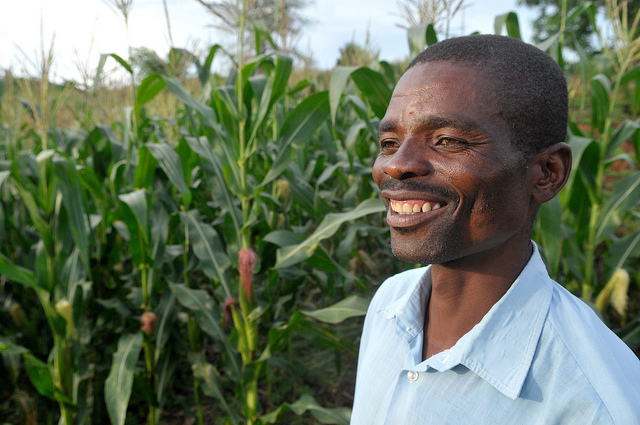Africa south of the Sahara has been plagued by low agricultural productivity while at the same time fertilizer usage has remained stubbornly low in the region. In an attempt to boost output, African governments have taken to subsidizing productivity-enhancing inputs such as fertilizer. Once a mainstay during the 1970s and 80s, the austerity programs of the following decade put a damper on funding for such subsidies. The food price crisis of 2007-08, however, sparked a renewed interest in input subsidies as a means of tackling both poverty and food insecurity. Fertilizer subsidy programs have experienced a recent resurgence in popularity in Africa, though many are now questioning whether the results justify the hefty price tag.
In their discussion paper, Variable Returns to Fertilizer Use and Its Relationship to Poverty: Experimental and Simulation Evidence from Malawi, IFPRI researchers Yanyan Liu and Liangzhi You, and coauthors Aurelie Harou and Christopher Barrett take a closer look at the profitability of fertilizer use under a variety of scenarios, as well as the impact these programs have on poverty reduction efforts, using Malawi’s experience as a case study.
The country’s 2004-2005 Farm Input Subsidy Program (FISP) was born in the wake of a major drought. FISP distributed seeds and fertilizer to approximately 50 percent of the population—to great success—spurring substantial positive impacts on the country’s food security. Despite the program’s accomplishments, however, larger questions remained around the program’s longer term effectiveness and profitability when faced with obstacles such as poor soil quality, droughts, and escalating fertilizer prices. Also, these gains did not come cheap: the program’s price tag was US$50 million in 2005/2006 which ballooned toUS$265 million in 2008/2009.
Researchers examined plot-level datasets from Malawi, along with soil and weather data, historical weather and price data, and local poverty rates and maps. Farmers participating in the study were not chosen at random; instead, they were identified based on farming skill and/or willingness to work with extension agents. For this reason, the study results point to the best possible scenario for fertilizer returns, as opposed to anticipated national averages.
Researchers found that the fertilizer distributed through FISP is indeed profitable, regardless of growing conditions, soil qualities, and across years. This profitability is quite robust, too: Researchers discovered that fertilizer prices could increase dramatically, by as much as 200 percent and the selling price for maize could drop as much as 50 percent and the program would still turn a profit.
However, as mentioned above, the results from this study skew positive as a result of the following factors:
- Non-random farmer selection;
- Land selected for the plots was left fallow for two years and was more fertile as a result, whereas land is generally too scarce in Malawi for such practices to be widely adopted; and
- The study estimates fertilizer returns based on coupling it with the use of improved seeds, suggesting that returns would be lower when used with nonimproved seed varieties.
The researchers also came to the following conclusions:
- Fertilizer subsidies may not be the best use of government funding to reduce poverty and food insecurity, particularly if the poor live in areas with less favorable growing conditions.
- There are trade-offs to be considered when deciding who to target with the subsidies: Better-off farmers who can yield greater output versus poor farmers who would benefit from the increased income generation. The high costs and logistical challenges associated with these programs raise genuine sustainability questions.
Other programs, such as road construction, education, and agricultural research and design might prove more effective in reducing poverty levels.
Related materials







